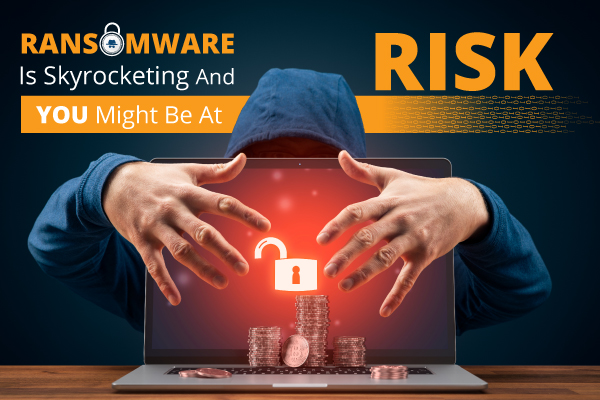Ransomware Is Skyrocketing and You Might Be at Risk
Ransomware Is Skyrocketing and You Might Be at Risk
There has been a global surge in ransomware attacks since 2021, with a 102% increase compared to the beginning of 2020. Highly organised groups are launching these cyberattacks, and the potential damage and crises that emerge as a result can be very devastating.
Ransomware is a type of malicious software that, once activated, can block users’ access to their computer and, as the name suggests, require a ransom to prevent their data from being exposed or lost. The ransomware threat is not a new occurrence at all. What has changed is that the attacks have been getting more sophisticated as time progresses, making them harder to handle. Many more organisations are finding themselves battling and trying to recover from these attacks.
Just last month, a ransomware organisation targeted the Colonial Pipeline in the United States. The Colonial Pipeline is the largest fuel pipeline in the country, supplying gas to the Eastern and Southern states. This attack resulted in gas prices increasing and some gas stations completely running out of gas. This incident sparked intense panic and concern from citizens who were affected. Tackling this issue required law enforcement and an expert cybersecurity agency.
Similarly, there was another ransomware attack in Ireland just after the Colonial Pipeline attack. However, Ireland’s Health System was on the receiving end of this cyber attack. As a precaution, Ireland Health Service Executive shut down their IT services which affected national IT systems. This impacted other healthcare institutions, including a maternity hospital, causing them to cancel outpatient visits and gynaecology clinics.
Another recent victim was the DC Police Department in the United States. In this instance, the attackers leaked internal information, resulting in the worst ransomware attack ever to hit the US police department. Some of the leaked data revealed personal information of some officers taken from background checks, finances and other private information.
Are you at risk of a ransomware attack?
It is projected that in 2021, a company will face a ransomware attack every 11 seconds. You might be considering your actual chances of being hit by a ransomware attack. These attackers have one goal in mind; getting paid. A ransomware attack can happen to any individual or business; however, businesses that store sensitive information are the most vulnerable. This includes banks, hospitals, police departments, IT and tech companies and any other organisation that stores customer information. These businesses are the most at-risk because they would have the biggest motivation to pay to have their data returned.
So, how do you get secured?
If you’ve fallen victim to a ransomware attack, you might think the simple solution is to pay up. However, payment is strongly discouraged as it does not guarantee that your attackers will relinquish ownership of the data. Nevertheless, let’s prevent you from facing an attack in the first place by highlighting ways you can get secured.
Utilise cybersecurity software
Ensure that antivirus software, firewalls and other security programs are installed on all computers you or your company uses. This software tends to require frequent updates, so make sure that these are done regularly. Be sure to do research on the best performing antivirus software and make a wise investment.
Perform frequent back-ups
Regular backups of your company’s files and data would allow you to retain and/or restore your system if an attack were to happen. It’s best to store the backups on an external hard drive and separate the device from your network or computer.
Invest in training
It should be mandatory that employees receive cybersecurity awareness training to inform them of the potential dangers of a cyberattack and highlight ways to reduce the company’s vulnerabilities (i.e. reckless behaviours such as opening spam emails, clicking on unfamiliar links etc.)
Act with caution
When it comes to cybersecurity, personal responsibility is essential. Be mindful when opening emails, especially those that include links and attachments. Avoid unsecured websites, and double-check URLs as malicious websites tend to be similar to legitimate ones (e.g. having a slight variation to spelling or using .com instead of .net)
Cybersecurity threats such as ransomware are trending upwards at a fast pace and will continue to evolve. Businesses must make cyber resilience a top priority. Being conscious of potential threats and utilising the tips highlighted above will significantly reduce the chances of an attack.
Did you find this blog post helpful?
If so, please consider sharing it and be sure to tweet us and let us know your biggest takeaway!
If you haven't subscribed to our blog, CLICK HERE so you never miss another post.

